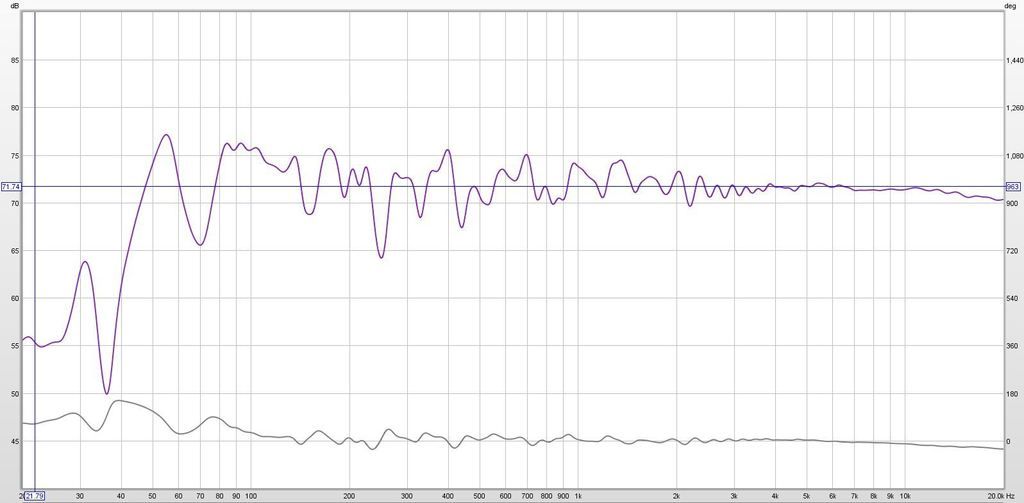Final Measurement
Today I finished tweaking the crossover and filters using measurement data. When compared to the simulated crossover in my previous post, the results were extremely close, with minor differences in cone breakup of the midrange and high frequency roll off of the tweeter. Due to the roll off on the tweeter, I had to apply a high shelf filter which compensated this and flattened its response as you can see from the attached in room FR. I flattened out the cone breakup at 3khz on the midrange and compensated for some of the variations in FR elsewhere and the results have been excellent.
After careful final tweaking, using both gated measurement data for high frequency and simulated+measurement data for low frequency I have been able to design a 3-way crossover which seems to work very well and the phase of the drivers aligns nicely at each crossover point (350hz & 2khz).
The frequency response below was taken at the reference point at 1m from the baffle, in line with the tweeter. The peaks and troughs throughout the lower frequency are due to room nodes and reflections which I cannot eliminate due to the fact I cant measure outside nor in an anechoic chamber. I have moved the speaker and microphone placement around the room in different locations to help differentiate between speaker FR and room effects to help eliminate only those caused by the speaker its self during filter implementation.
The final in room response is shown below and I am very happy with the result which for the most part coincided very well with the simulated data, with the exception being the accuracy of the tweeter response on baffle. Thanks all for the help along the way - I made it in the end! Now just to finish the cabinets off!

Today I finished tweaking the crossover and filters using measurement data. When compared to the simulated crossover in my previous post, the results were extremely close, with minor differences in cone breakup of the midrange and high frequency roll off of the tweeter. Due to the roll off on the tweeter, I had to apply a high shelf filter which compensated this and flattened its response as you can see from the attached in room FR. I flattened out the cone breakup at 3khz on the midrange and compensated for some of the variations in FR elsewhere and the results have been excellent.
After careful final tweaking, using both gated measurement data for high frequency and simulated+measurement data for low frequency I have been able to design a 3-way crossover which seems to work very well and the phase of the drivers aligns nicely at each crossover point (350hz & 2khz).
The frequency response below was taken at the reference point at 1m from the baffle, in line with the tweeter. The peaks and troughs throughout the lower frequency are due to room nodes and reflections which I cannot eliminate due to the fact I cant measure outside nor in an anechoic chamber. I have moved the speaker and microphone placement around the room in different locations to help differentiate between speaker FR and room effects to help eliminate only those caused by the speaker its self during filter implementation.
The final in room response is shown below and I am very happy with the result which for the most part coincided very well with the simulated data, with the exception being the accuracy of the tweeter response on baffle. Thanks all for the help along the way - I made it in the end! Now just to finish the cabinets off!
